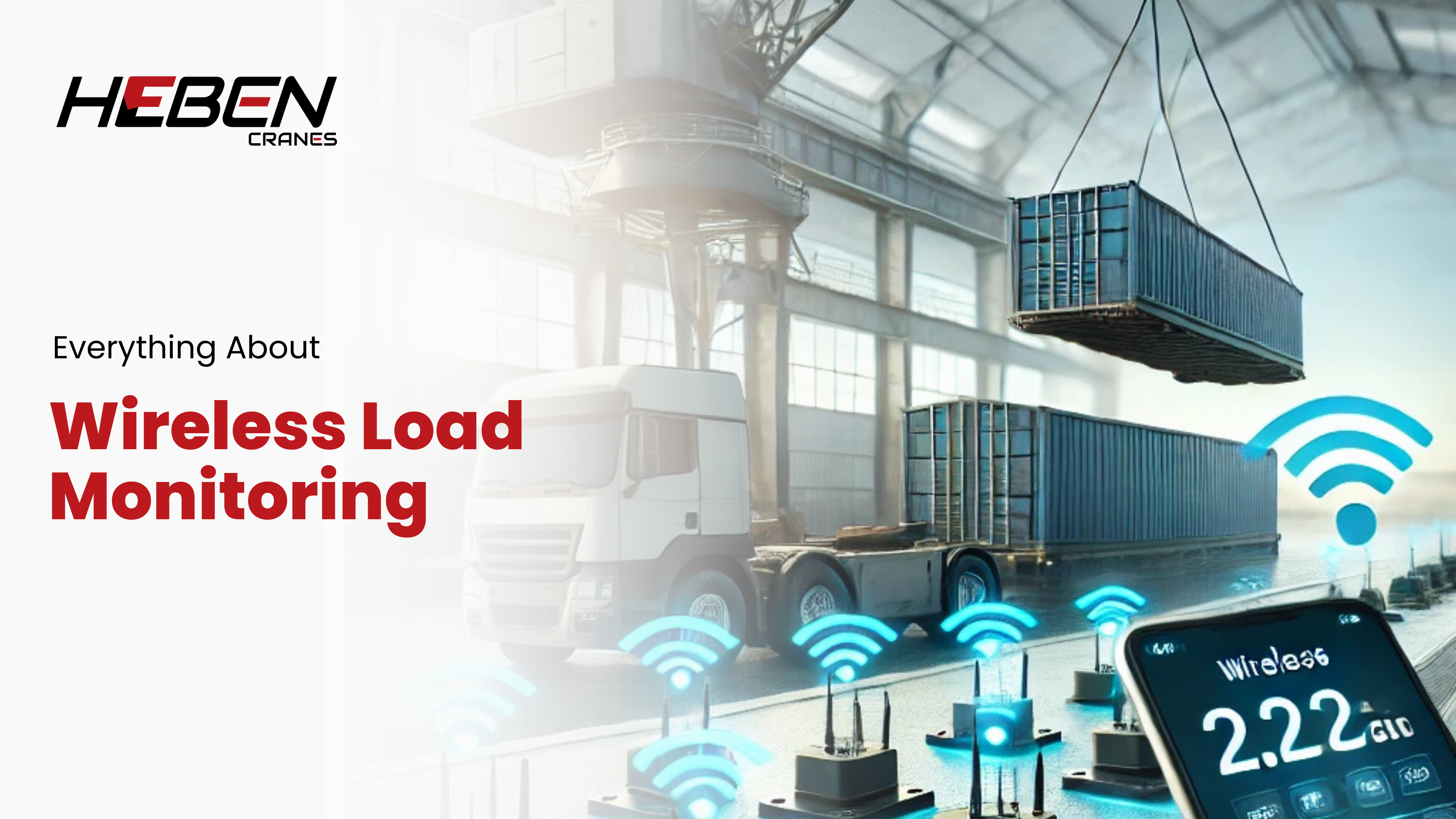In an era where efficient and safe load management is not merely advantageous, but crucial, a groundbreaking solution has emerged. The advent of wireless load monitoring—a technology that has transformed the landscape, promising enhanced safety, streamlined efficiency, and decreased operational costs across diverse sectors.
This article delves into the fascinating world of wireless load monitoring, exploring its components, advantages, applications, and future trends.
Understanding Wireless Load Cells
The core of wireless load monitoring systems is the wireless load cell. These are high-tech devices designed to measure weight and transmit the data wirelessly to monitoring systems without the use of cumbersome cables. Wireless load cell transmitters are sophisticated devices designed to facilitate the seamless transmission of weight measurements from load cells to data collection or control systems without the need for physical wires. This technology transmits data in real-time, therefore proving to be highly useful for any environment which calls for absolute safety and accuracy.
There are different types of wireless load cells, including integrated wireless transmitters, external wireless bridges, and multi-point wireless systems. Each type is made to serve a specific purpose in meeting the needs of different applications. For example, multi-point systems can monitor multiple lifting points at the same time, which ensures optimal weight distribution during heavy lifts, something that is essential for construction and entertainment industries.
Advantages of Wireless Load Monitoring
The advantages of wireless load monitoring are manifold and significant:
- Enhanced Safety: One of the primary benefits of wireless load monitoring is improved safety. By eliminating wires that can become tangled or damaged in dynamic environments, these systems reduce the risk of accidents. Real-time monitoring allows operators to make informed decisions quickly, ensuring that loads remain within safe limits.
- Cost Efficiency: Implementing a wireless system can lead to substantial cost savings. Wireless transmitters offer unparalleled flexibility, allowing for easy and reliable remote monitoring in dynamic environments. This flexibility reduces installation time and maintenance costs associated with traditional wired systems.
- Flexibility and Mobility: Wireless load monitoring systems provide users with the freedom to monitor loads from various locations using mobile devices. This capability is particularly beneficial in large industrial settings or during events where quick adjustments may be necessary.
Applications of Wireless Load Monitoring
Wireless load monitoring technology finds applications across a wide range of industries:
- Construction and Heavy Lifting: In construction settings, cranes and other heavy machinery rely on accurate load measurements to prevent overloading. Wireless load cells ensure that operators can monitor loads in real-time, enhancing safety during lifts.
- Infrastructure Monitoring: Wireless load monitoring plays a crucial role in maintaining the integrity of structures such as bridges and buildings. By continuously assessing loads on these structures, engineers can identify potential issues before they become critical.
- Industrial Settings: In manufacturing and logistics, wireless load monitoring helps manage inventory and optimize processes. By providing real-time data on material weights, businesses can streamline operations and reduce waste.
Key Features to Look For
When considering a wireless load monitoring system, several key features should be prioritized:
- Communication Range and Reliability: The effectiveness of a wireless system largely depends on its communication range. Systems must be able to transmit data reliably over distances suitable for their specific applications—whether on a construction site or within an industrial facility.
- Accuracy and Data Reporting: Accuracy is paramount in any load monitoring system. Users should look for systems that offer high precision (e.g., +/-1.0% full scale) and provide various data outputs such as digital displays or app interfaces.
- Battery Life and Maintenance: Since many wireless systems rely on battery power, understanding battery life is crucial for long-term operation. Systems should be designed for easy maintenance to ensure minimal downtime.
Future Trends in Wireless Load Monitoring
The future of wireless load monitoring is bright, with several trends shaping its evolution:
- Integration with IoT: The Internet of Things (IoT) is set to revolutionize how we monitor loads. By integrating wireless load cells with IoT platforms, businesses can access real-time data analytics that enhance decision-making processes.
- Advancements in Communication Protocols: As technology progresses, communication protocols will continue to improve. Innovations in Bluetooth and radio frequency technologies will enable faster data transmission rates and more reliable connections over longer distances.
Remote crane monitoring ensures continuous supervision and advanced data analytics… This also helps improve product quality and reduce warranty costs by performing data analytics on defect anomalies reports remotely at your fingertips. Such advancements will empower users with unprecedented insights into their operations.
Conclusion
Wireless load monitoring is a technological revolution in the way industries handle safety and efficiency during heavy lifting operations. Its many advantages—improved safety, cost efficiency, and flexibility—make it an industry standard in the making. Companies like Heben Cranes continue to innovate in this space, and embracing wireless solutions will not only improve operational capabilities but also ensure compliance with stringent safety standards.
FAQ
Q1: Are there any specific safety-related regulations or standards that apply to wireless load monitoring systems?
Yes, wireless load monitoring systems are also subject to different safety regulations and certifications for the reliability and safety of operations. These systems must often comply with standards such as IEC 61508, which deals with the functional safety of electrical/electronic/programmable electronic safety-related systems. Moreover, the load cells used in such systems might need to have some certifications like NIST compliance for accuracy and reliability in measurements. In addition, organizations such as TÜV SÜD offer testing and certification services to help manufacturers comply with regulations regarding wireless technology in industrial applications.
Q2: How does the battery life of wireless load cells impact their maintenance needs?
The battery life of wireless load cells has a significant impact on their maintenance requirements. Longer battery life reduces the frequency of maintenance checks and replacements, allowing for more continuous operation without interruptions. However, if a load cell has a shorter battery life, it necessitates more frequent monitoring and replacement, which can increase maintenance costs and downtime. Therefore, selecting wireless load cells with extended battery life is crucial for minimizing maintenance efforts and ensuring consistent performance in applications.
Q3: Can a wireless load monitoring system be incorporated into existing equipment and software?
Yes, most wireless load monitoring systems can be integrated with existing equipment and software. Many modern systems are designed to be compatible, allowing them to easily connect with different industrial equipment and control systems. The integration is often done through standard communication protocols like MODBUS or CANbus, which allow the data coming from the load monitoring system to be easily transferred to existing software platforms for analysis and reporting. This flexibility enhances the operational efficiency due to the leverage of the user’s current infrastructure while monitoring is upgraded.
Q4: What training must be provided for operators to get the best effect from wireless load monitoring systems?
Operators using wireless load monitoring systems require training on a number of areas. First, they should be taught the basic principles of how the system works, including how to interpret data readings and manage alerts. Hands-on sessions in setting up the equipment, routine maintenance checks, and troubleshooting common issues should also be included in the training. Moreover, the operating personnel should be informed of safety precautions when working with such systems so that operations are conducted in safe environments with possible risks. Full training enhances the performance of the system and minimizes the chance of errors from the operators.




